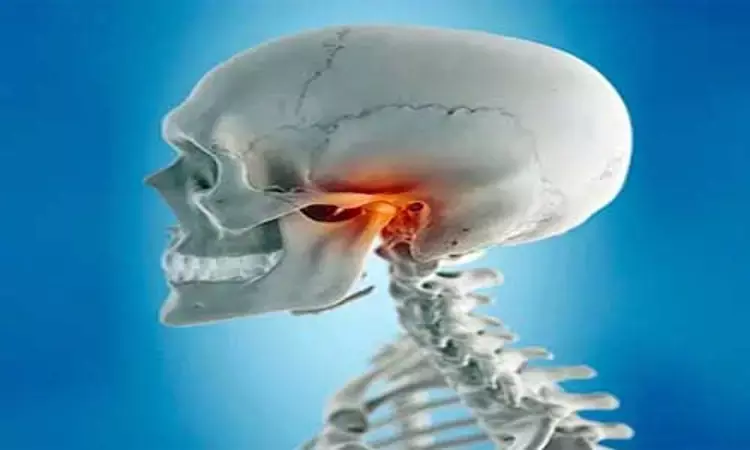- Home
- Medical news & Guidelines
- Anesthesiology
- Cardiology and CTVS
- Critical Care
- Dentistry
- Dermatology
- Diabetes and Endocrinology
- ENT
- Gastroenterology
- Medicine
- Nephrology
- Neurology
- Obstretics-Gynaecology
- Oncology
- Ophthalmology
- Orthopaedics
- Pediatrics-Neonatology
- Psychiatry
- Pulmonology
- Radiology
- Surgery
- Urology
- Laboratory Medicine
- Diet
- Nursing
- Paramedical
- Physiotherapy
- Health news
- Fact Check
- Bone Health Fact Check
- Brain Health Fact Check
- Cancer Related Fact Check
- Child Care Fact Check
- Dental and oral health fact check
- Diabetes and metabolic health fact check
- Diet and Nutrition Fact Check
- Eye and ENT Care Fact Check
- Fitness fact check
- Gut health fact check
- Heart health fact check
- Kidney health fact check
- Medical education fact check
- Men's health fact check
- Respiratory fact check
- Skin and hair care fact check
- Vaccine and Immunization fact check
- Women's health fact check
- AYUSH
- State News
- Andaman and Nicobar Islands
- Andhra Pradesh
- Arunachal Pradesh
- Assam
- Bihar
- Chandigarh
- Chattisgarh
- Dadra and Nagar Haveli
- Daman and Diu
- Delhi
- Goa
- Gujarat
- Haryana
- Himachal Pradesh
- Jammu & Kashmir
- Jharkhand
- Karnataka
- Kerala
- Ladakh
- Lakshadweep
- Madhya Pradesh
- Maharashtra
- Manipur
- Meghalaya
- Mizoram
- Nagaland
- Odisha
- Puducherry
- Punjab
- Rajasthan
- Sikkim
- Tamil Nadu
- Telangana
- Tripura
- Uttar Pradesh
- Uttrakhand
- West Bengal
- Medical Education
- Industry
Incisal guidance angle linked to the growth and development of temporomandibular joint

The incisal guidance angle (IGA) is related to temporomandibular joint (TMJ), and changes to the IGA are often involved in the prosthetic and orthodontic treatment of anterior teeth. However, the influence of incisal guidance on the growth, development and remodelling of the TMJ is not yet clear.
Findings from a recent study published in the BMC Oral Health reveal that articular fossa of patients with shallower incisal guidance changed to a flatter shape with age, whereas the condylar anterior slope and articular eminence of patients with steeper incisal guidance changed towards a steeper alignment, thereby indicating a correlation between incisal guidance angle and temporomandibular joint shape.
Ying Li and associates from the Stomatological Hospital of Chongqing Medical University, Chongqing, China aimed to investigate age-related morphological differences in the temporomandibular joint in subjects with different incisal guidance angle.
Cone-beam computed tomography (CBCT) images of 274 patients were included (group 1, IGA < 45°; group 2, 45° ≤ IGA ≤ 60°; group 3, IGA > 60°). Each group was then divided into 4 age groups (group a, 6–12 years; group b, 13–16 years; group c, 17–25 years; group d, 26–33 years). The joint morphology was assessed by linear measurements, angular measurements, and subjective evaluations. The incisal guidance angle and occlusal plane angle were also measured.
The following findings were drawn-
a. Anterior inclination of condyle (AIC) increased with age in the three IGA groups but decreased from 17 years onward in group 2 (P < 0.05).
b. In the age groups analysis, the anterior inclination of condyle in group 1 was smaller than that in group 3 but larger than that in group 2 (P > 0.05).
c. Articular eminence inclination (AEI) decreased with age in group 1 (P = 0.027) but increased with age in group 3 (P = 0.053).
d. The articular eminence inclination in group 2 was larger than that in group 1 at 17–25 years (P = 0.046), and it was larger in group 3 than in group 1 at 26–33 years (P = 0.047).
e. The incisal guidance angle had a weak correlation with articular eminence inclination (P < 0.05).
Hence, it was concluded that "patients with different incisal guidance have different condylar and articular fossa shapes, and different trends with age. Patients with more shallow incisal guidance tended to have a flatter fossa with age, whereas patients with steeper incisal guidance had a tendency towards a steeper anterior condylar slope and increased articular eminence inclination."
For further reference,
Li, Y., Zhou, W., Wu, Y. et al. The relation between incisal guidance angle and the growth and development of temporomandibular joint: a multi-cross-sectional retrospective study. BMC Oral Health 21, 380 (2021). https://doi.org/10.1186/s12903-021-01716-8.
Dr. Nandita Mohan is a practicing pediatric dentist with more than 5 years of clinical work experience. Along with this, she is equally interested in keeping herself up to date about the latest developments in the field of medicine and dentistry which is the driving force for her to be in association with Medical Dialogues. She also has her name attached with many publications; both national and international. She has pursued her BDS from Rajiv Gandhi University of Health Sciences, Bangalore and later went to enter her dream specialty (MDS) in the Department of Pedodontics and Preventive Dentistry from Pt. B.D. Sharma University of Health Sciences. Through all the years of experience, her core interest in learning something new has never stopped. She can be contacted at editorial@medicaldialogues.in. Contact no. 011-43720751
Dr Kamal Kant Kohli-MBBS, DTCD- a chest specialist with more than 30 years of practice and a flair for writing clinical articles, Dr Kamal Kant Kohli joined Medical Dialogues as a Chief Editor of Medical News. Besides writing articles, as an editor, he proofreads and verifies all the medical content published on Medical Dialogues including those coming from journals, studies,medical conferences,guidelines etc. Email: drkohli@medicaldialogues.in. Contact no. 011-43720751


